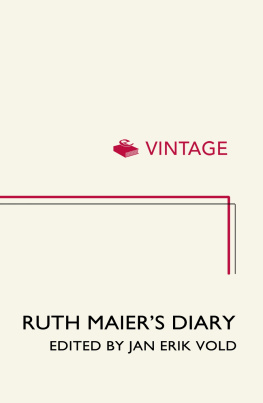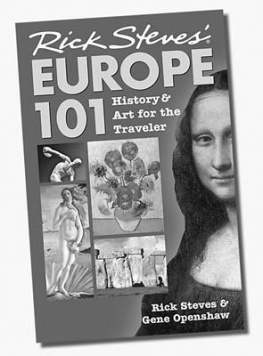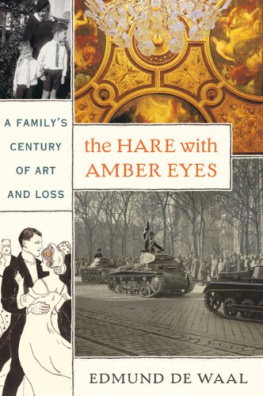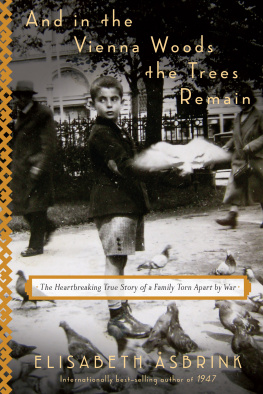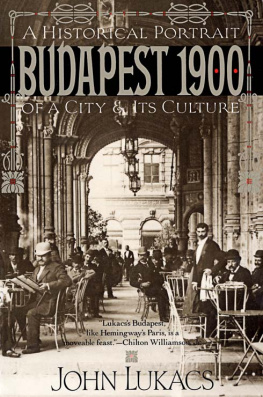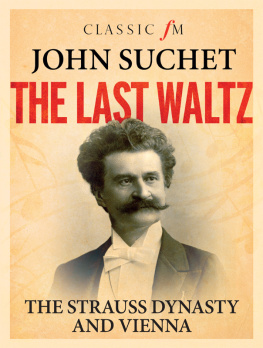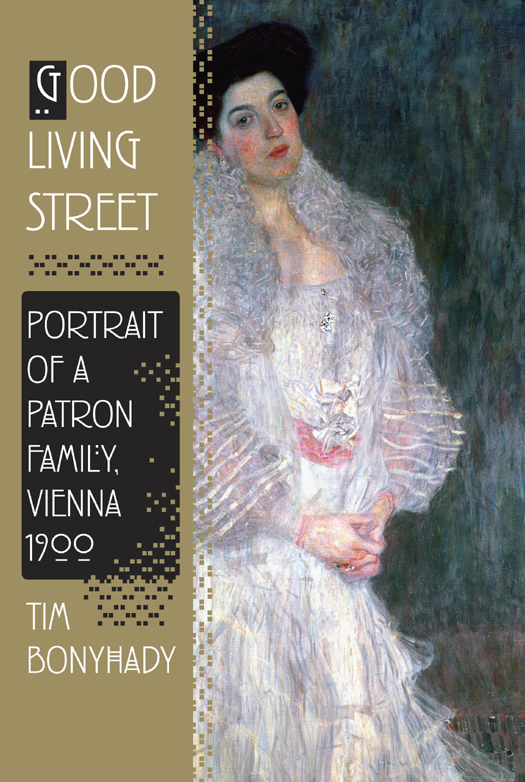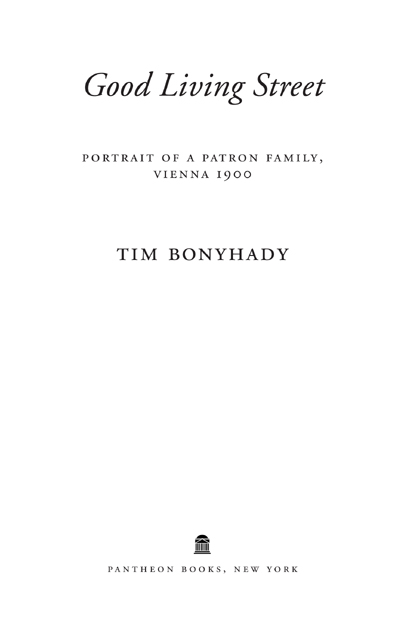ALSO BY TIM BONYHADY
Images in Opposition:
Australian Landscape Painting, 18011890
The Law of the Countryside: The Rights of the Public
Burke and Wills: From Melbourne to Myth
Places Worth Keeping: Conservationists, Politics and Law
The Colonial Earth
Copyright 2011 by Tim Bonyhady
All rights reserved. Published in the United States by Pantheon Books,
a division of Random House, Inc., New York, and in Canada
by Random House of Canada Limited, Toronto.
Pantheon Books and colophon are registered trademarks of
Random House, Inc.
Library of Congress Cataloging-in-Publication Data
Bonyhady, Tim, [date]
Good Living Street : Portrait of a Patron Family, Vienna 1900 /
Tim Bonyhady.
p. cm.
Includes bibliographical references and index.
eISBN: 978-0-307-90681-6
1. Gallia family. 2. Art patronsAustriaViennaBiography.
3. JewsAustriaViennaBiography. 4. Gallia familyArt patronage. 5. Vienna
(Austria)Biography. I. Title.
N5252.G35B66 2011 709.2243613dc22 [B] 2010053160
www.pantheonbooks.com
Jacket image: Portrait of Hermine Gallia, 1904, by Gustav Klimt. National Gallery,
London, UK/The Bridgeman Art Library International
Jacket design by Carol Devine Carson
v3.1
For Bruce
Contents
Illustrations
Wohllebengasse 4, c. 1913.
Emil Orlik, Gustav Mahler, 1903.
The postcard sent by Theobald Pollak and Alma and Gustav Mahler to Hermine, July 1903.
Ferdinand Andri, Moriz Gallia, 1901.
Gustav Klimt, Hermine Gallia, 19031904.
The Klimt portrait of Hermine with two of Koloman Mosers cubic chairs in the Klimt Kollektiv at the Secession, 1903.
Gustav Klimt, Beech Forest, 1903.
Hermine, aged about sixteen, c. 1886.
One of Hermines many merit certificates.
The Gallias and the Hamburgers, 1903.
Moriz and Hermine, after being married in Viennas main synagogue, 1893.
Moriz and Hermine kiss on the steps of Adolf and Ida Gallias villa, Baden, c. 1898.
Erni with one of his wet nurses, 1895.
Hermine with Gretl in her arms and Erni on a table, 1897.
Kthe and Lene, 1901.
Moriz with Erni on his shoulders and Hermine with Gretl on her lap, c. 1898.
Hermine dressed for going out, wearing her best pearls.
A page from Gretls third diary, March 30, 1916.
The program for the Parsifal seen by the Gallias in Bayreuth, 1912.
A letter from Klimt to Moriz accepting an invitation to dinner at the Schleifmhlgasse.
Hermines photograph of Klimt, taken by the Madame dOra studio of Dora Kallmus, c. 1908.
Koloman Moser, Sweet Bowl, 1903.
Moriz and Hermines summerhouse in Alt Aussee.
The ground-floor entrance to Wohllebengasse 4, designed by Franz von Krauss.
The boudoir in the Gallia apartment.
The smoking room in the Gallia apartment.
The salon in the Gallia apartment.
Eleven-year-old Gretl, 1908.
Gretl, around the time of her two ball seasons.
Eighteen-year-old Gretl.
One of the Gallias war glasses.
Klimts funeral at the Hietzing cemetery, February 9, 1918.
Lene, Hermine, Kthe, and Gretl, late 1917 or early 1918.
Erni and Mizzi, 1921.
Gretl and Paul, 1921.
Annelore, aged three, 1925.
Annelore in her sailor suit and pearls, 1931.
The Klimt portrait of Hermine and some of the Hoffmann furniture from the salon crammed into Kthes apartment in Viennas Third District, c. 1938.
Annelore in her ball dress, Landstrasser-Hauptstrasse, March 1938.
Annelore, September 1938.
Gretl and Annelore as photographed in Brisbane by the Telegraph, January 4, 1939.
Pauls passport when he escaped the Nazis by illegally entering Belgium without a visa, 1939.
St. Vincents College, Sydney, run by the Sisters of Charity, 1939.
Kthe and Anne, Sydney, 1945.
Gretl, Sydney, Christmas 1949.
The Grail, including Anne, performing in Sydney in 1941.
Paul, Toulouse, February 1948.
The Bonyhadys, 1944.
Eric and Anne, Sydney, January 1948.
Gretl, Kathe, Anne, Bruce, and Tim in the apartment in Sydney, Christmas 1967.
Anne, Canberra, 2002.
The book stamp by Fritzi Lw showing Hermine and Moriz as a young courting couple.
COLOR PLATES
The poster by Heinrich Lefler for Auer von Welsbachs Gas Glowing Light Company.
Ferdinand Andri, The Gallia Children, 1901.
Carl Moll, Beethoven House, Heiligenstadt, 1903.
Ernst Sthr, Moonlit Landscape, 1903.
Carl Moll, In the Gardens of Schnbrunn, c. 1910/1911.
Giovanni Segantini, The Evil Mothers, 1894.
The sideboard designed by Adolf Loos, 1903.
Morizs inkstand, designed c. 1911 by Josef Hoffmann.
Michael Powolnys ceramic version of Klimts The Kiss, c. 1907.
Josef Hoffmann, Design for Boudoir, 1915.
Josef Hoffmann, Design for Smoking Room, 1915.
Josef Hoffmann, Two Vases and a Pair of Goblets, 1915 or 1916.
Carl Witzmann, Bowl, 1912.
Josef Hoffmann, Work Table and Two Chairs, 1913.
The copy of Der Ewige Jude, or The Eternal Jew.
THE GALLIA FAMILY
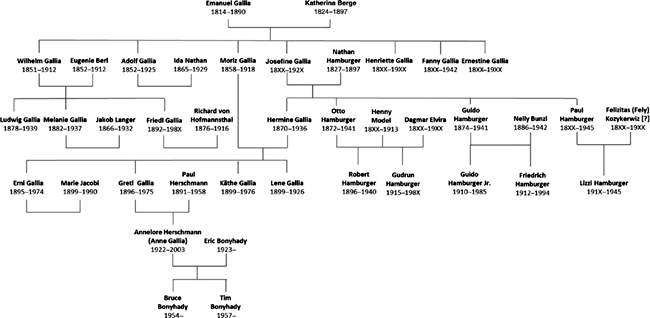
Click to view a larger image.
I
HERMINE
Introduction
Nineteen thirty-eight was a good year to be a mover in Vienna. As tens of thousands fled the city following the German annexation of Austria, the Nazis seized their businesses, required them to pay punitive departure taxes, prevented them from converting their remaining money into foreign currency, and stole much of their art. The refugees were usually able to leave with their other household goods, however, because the Nazis were eager to maintain the pretense that Austrias Jews were leaving voluntarily, and they wanted other countries to take them. The result was a surge in demand for movers in a city where it was common to rent the same apartment for life.
Viennas leading newspaper, the Neue Freie Presse, did not need to report on this new economy built on persecution that led many movers to employ more workers and some to become specialists in the refugee trade. The newspapers advertising columns told the story. Before the Anschluss, or annexation, that March, each edition of the Presse included at most one small advertisement from a mover, and more often contained none. Within a fortnight of the Anschluss, the Presse often carried three notices from movers quick to exploit the new market. By late April the newspaper carried up to seven of these advertisements. At the end of May, eleven.
The most remarkable consignment to leave Vienna belonged to two sistersone unmarried, the other divorced, both unknown beyond the small circles in which they moved in Viennese society. Dr. Kthe Gallia, one of the first generation of women graduates of the University of Vienna, had abandoned her work as a chemist more than a decade earlier to become the manager of a family company that sold gas stoves. Her sister, Margarete Herschmann-Gallia, known as Gretl, had briefly been married to a Viennese leather merchant, Dr. Paul Herschmann. Like most married women of her class, Gretl had never worked.


